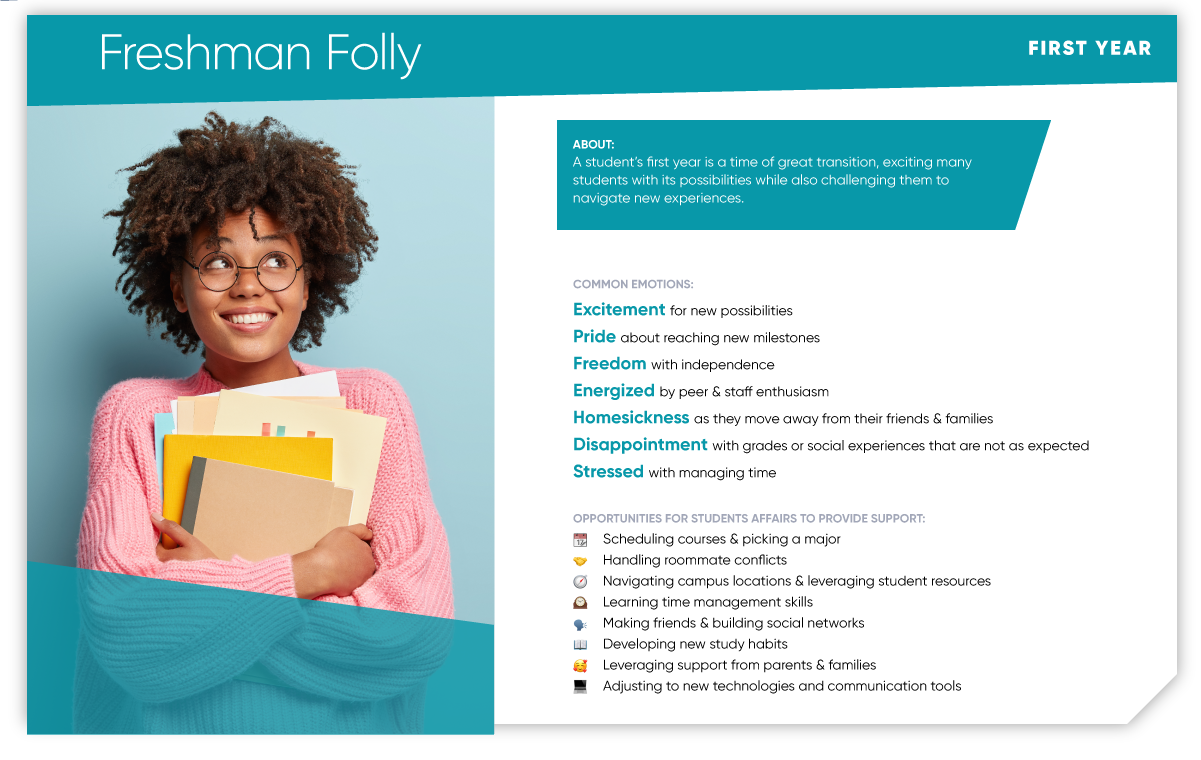What the Traditional 4-Year Student Journey Means for Engagement
Student affairs professionals constantly make assumptions about their learners.
By knowing a learner’s gender, academic major, residential status, and other demographic attributes, student affairs professionals attempt to extrapolate that student’s goals, interests, challenges and needs.
These snap judgments usually aren’t malicious; they’re a natural human inclination and, better yet, an effort to customize campus programs and co-curricular opportunities to better fit each learner.
One defining factor that can be particularly revealing is a student’s year—where they are in their undergraduate journey.
Knowing if a student is in their first, second, third or fourth year can give you valuable insight into what emotions they might be experiencing and, thus, how your office can best engage them on campus.
Furthermore, understanding the bigger picture—the full four-year engagement journey—can help all the offices within your broader student affairs division develop collaborative strategies that support students appropriately each and every year.
So, we’re inviting you to take a step back with us, to broaden your lens beyond the targeted focus of your office this week. We’ve designed four simple images summarizing the common emotions that a traditional four-year undergraduate student experiences each year. We’ve also included ideas for how your student affairs department can play a pivotal role in helping students manage these emotions—through events and services that uplift their enthusiasm, tamper their nerves, foster their ambitions and so much more.
Here's a preview:

Click here to download all four cards.
We hope that, by continually reminding yourself of the full enrolled student journey, you’ll discover new opportunities for engagement, better assess individual student needs and gain confidence about the value of your work.
Happy engaging!
Last updated: January 11, 2023




